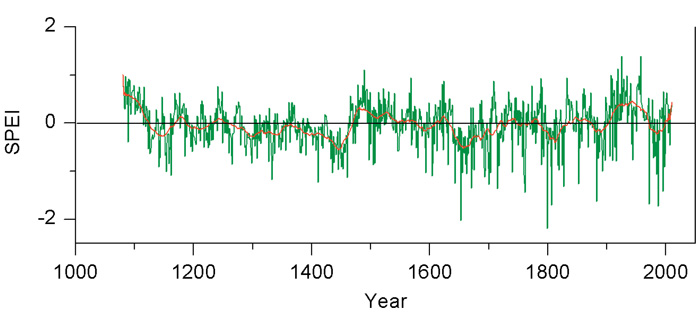| Follow @co2science |
Paper Reviewed
Nie, C.Y., Zhang, Q.B. and Lyu, L. 2017. Millennium-long tree-ring chronology reveals megadroughts on the southeastern Tibetan Plateau. Tree-Ring Research 73: 1-10.
Climate alarmists typically contend that in response to global warming, extreme weather events such as drought will become more frequent and severe. It is therefore important to determine if long-term precipitation data from various places throughout the world provide any evidence for this contention. The latest work to shed some light on this subject comes from Nie et al. (2017), who prepared a millennium-long drought history for the southeastern Tibetan Plateau. This was accomplished through statistical examination of tree rings cored from old-growth juniper trees (Juniperus tibetica) from Biru county, Naqu prefecture, which rings were found to correlate well with an index of late-spring moisture (the Standardized Precipitation Evapotranspiration Index, SPEI, calculated as the difference between precipitation and potential evaporation).
The resultant proxy, covering the years 1080-2010, is presented in the figure below. As seen there, the reconstruction reveals the presence of multidecadal to centennial changes in moisture, including "a two-century megadrought during the late 13th to late 15th centuries and a seven-decade megadrought during AD 1630s to 1690s." Commenting on these findings, Nie et al. write that they "indicate the vulnerability of [the Tibetan Plateau] to moisture deficits that cannot be discernible from the limited length of observed records." What is more, we note that they reveal there is nothing unusual, unnatural or unprecedented about the drought regime of the most recent century, during which time the CO2 content of the atmosphere rose by more than 40 percent. Despite this increase, there appears to be no discernible impact on drought, which presently remains well within the bounds of the millennial-scale record.

Figure 1. The reconstruction of May-June SPEI for the period AD 1080-2010 in Biru, Tibet. The red line presents a 31-year running average. Source: Nie et al. (2017).




